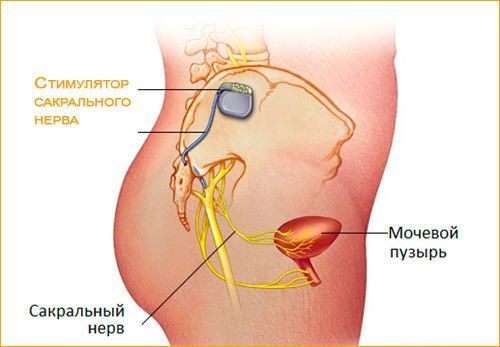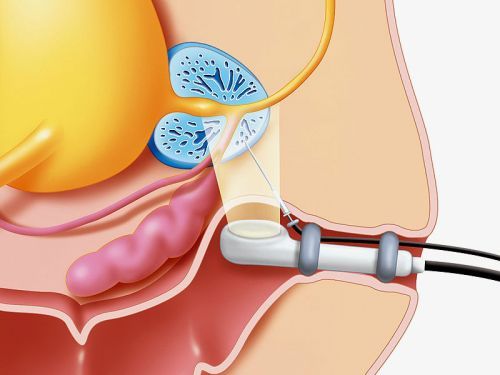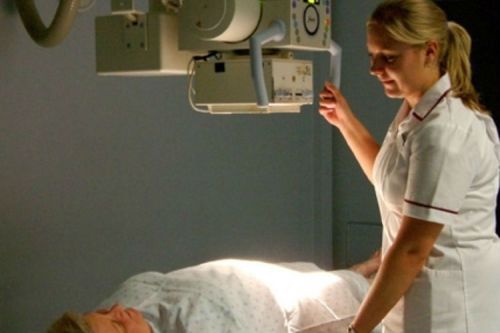The act of urination (innervation) is a collection of the work of the muscular layer (detrusor) of the bladder, which, being reduced, ensures the removal of liquid, and of the sphincters of the urethra, governing the retention of urine in the process of its accumulation until the desire arises to perform the act of urination.
Residual urine is an important criterion for determining the presence of pathological changes in the lower urinary tract. In a healthy body in the cavity of the bladder after urination the urine residue shall not exceed 10% of the total volume of urine.
Determination of the residual urine in the bladder has important diagnostic value in a number of pathologies, as a rule, require immediate treatment.
Mechanism of urination
Depending on the development of pathological changes in any of the structural elements of the urinary tract, responsible for the removal of urine, there are various disturbances, leading to damage of the detrusor of the bladder with subsequent development of atrophy and, therefore, failing adequately to shrink.
Important! Despite the fact that clinical importance is the amount of urine greater than 50 ml, the maximum remaining amount may exceed 1 liter.
Table: Permissible residual urine volume by age
| Age | The residual urine volume in normal |
| Children up to 1 month | < 3 ml |
| Up to 1 year | < 5 ml |
| Up to 4 years | < 7 ml |
| Up to 10 years | < 10 ml |
| Up to 15 years | < 20 ml |
| Adults of both sexes | < 50 ml |
Reasons
All the causes of the appearance of residual urine can be divided into several groups:
- neurological;
- infections;
- obstructive;
- independent of pathology (diverticulum, stricture of the urethra).
Disorders neurological
Neurological disorders are always associated with disruption of the part of the nervous system, which is responsible for three functions of the urinary bladder:
- tank (the function which enables the accumulation of urine in the cavity of the bladder);
- evacuation (function, contributing to the removal of urine);
- valve (function enable to keep a certain amount of urine in the bladder).
Defeat any level of the nervous system, from nerve endings, located on the inner surface of the bladder, and ending with the disorders in the brain can lead to a variety of abnormalities, including the overactive urethral sphincter.
As a rule, the cause of this disease is lesion of the spinal cord as a result of:
- tumor formation;
- intervertebral hernia;
- injuries of the spine;
- congenital abnormalities of the CNS (observed usually in children).
Due to the difficulties encountered while urinating even with a full bladder, atony of the muscular layer, which is under constant pressure loses its ability to contract and push out the liquid, accumulating a large amount of residual urine.
Treatment of neurogenic bladder is psychological, physical and pharmacological methods of influence:
- correction behavioral lifestyle (streamline mode drinking and urination);
- stimulation of urination by massaging the back;
- physiotherapy;
- drug effects on the weakening of sphincter tone;
- drugs that regulate the work of the CNS;
- physiotherapy.
The plexus of nerve endings in the region of the lumbosacral stimulates the process of urination
Inflammatory-infectious processes
As a rule, the role of inflammatory diseases in the formation of residual urine is in the formation of edema or spasm of the urethral sphincter due to the pain and tissue irritation. A similar reaction can be observed in cystitis, balanitis and urethritis. A special place among inflammatory diseases, forming persistent violation of urination is the inflammation of the prostate in men.

Enlargement of the prostate due to an inflammatory process or the formation of benign (prostatic hyperplasia), or malignant (prostate cancer) tumors, causing, in the initial stages of the disease, minor violations of urination, leading subsequently to more pronounced:
- frequent urge to the toilet;
- intermittence jet during urination;
- the need for voltage press and natureline for a complete emptying of the cavity of the bladder;
- a feeling of incomplete emptying of the bladder.
Important! With timely treatment to the doctor, prostate adenoma, successfully treated complex effects of medication and physiotherapy, and allows you to return to a normal life.
Enlargement of the prostate towards the bladder, and creates an obstacle to the flow of urine
Obstruction of the urinary tract
The presence of stones in bladder is one of the most common reasons for the formation of residual urine. Testalias with the same frequency as occurs in men and women. Varies only in the mechanism of formation of calculus – the male body inherent in the formation of stones directly in the cavity of the bladder, and the female body, migration of stones from the kidney.

A feeling of incomplete emptying of the bladder
The reasons for the formation of stones can be internal or external factors of influence:
- chronic infectious diseases of the urinary tract;
- a metabolic process;
- a wrong diet;
- sedentary lifestyle;
- work in hazardous industries;
- wrong drinking regime.

In addition to the basic features of the formation of residual urine, when cintolese report pain in the lower abdomen radiating to groin, scrotum or perineum. Also characteristic symptom is the sudden interruption of a full jet during urination. The cure lies in eliminating stones drugs or by lithotripsy, with subsequent excretion of them naturally.
Important! Therapy helps kumaraswamy drugs for 2-6 months to dissolve the stones in the kidney and bladder, but has many side effects.
Drug Kanefron prevents the formation of stones and has a minimum of contraindications
Diverticulum
A diverticulum is a saccular cavity formed from a wall of the bladder. There are two types of diverticula – true and false. A true diverticulum consists of mucosa and muscular layer of the vesical tissue and, as a rule, is a congenital anomaly.
False diverticulum (acquired) develops as a result of the increase in intravesical pressure that occurs on the background of pathological conditions accompanied by difficulty with urination and systematically incomplete emptying of the bladder. Due to the high fluid pressure atrophy of the muscular layer, destroyed the fibers diverge, and the mucous pressure bulges into the abdominal cavity.
The main difference between the false from the true diverticulum, is the lack of muscle fibers in its wall. The main clinical symptom of the diverticulum is a two-time urination with turbid appearance of urine.
Treatment consists primarily in removing causes increased intravesical pressure (in case of acquired diverticulum) and the subsequent surgical removal of the deformation.
Stricture of the urethra
Pathological narrowing of the patency of the urethra is called stricture of the urethra.
Metaplasia tissues of the mucous membrane of the urethra can be caused by various reasons that cause damage of varying severity:
- thermal or chemical burns to the urethra;
- inflammatory processes (cystitis, urethritis);
- injuries or bruises of the perineum;
- injury to the mucosa during installation of the catheter;
- congenital abnormalities of the urinary tract.
As a result of replacement of the damaged cells of the mucous connective tissue is scar formation, which significantly complicate the process of micturition, resulting in bladder urine remains.
Stricture of the urethral canal on x-ray
Signs and complications
Urine that remains after urination in the cavity of the bladder, not only delivers a large amount of discomfort, but she is an alarming symptom, the severity of which depends on its quantity.
Residual urine is an important clinical sign as it leads to disorders of the upper urinary tract and is a consequence of the pathological processes leading to functional disorders of the bladder.
The main symptoms that accompany excess residual urine are:
- increased frequency of urination;
- a weak or interrupted stream;
- the need to strain your abdominal muscles in order to begin the process of voiding or to prevent its interruption;
- inflammatory processes in the urinary tract.
In the absence of timely treatment, increases the risk of development of inflammatory processes, as congestion can create a favorable environment for development of pathogenic microflora and the formation of stones. Violation of the outflow of urine can also lead to development of hydronephrosis, pyelonephritis and renal failure.
In the treatment of acute urinary retention it is removed by means of a rubber catheter
Diagnosis
Determination of the presence and amount of residual urine is the main purpose of the survey, which includes a survey of the patient for the presence of clinically significant symptoms.
It continues through the instrumental methods of research, the list of which includes:
- the study of the dynamics of changes of pressure jet during urination (uroflowmetry);
- orthostatic test of urine;
- measurement of pressure in the bladder at different points in urination (cystometry);
- assessment of contractility of the muscular layer of the bladder wall (electromyography);
- the study of the functional state of the sphincter and urethra (uretroprostatit);
- Ultrasound of the bladder before and after urination;
- Ultrasound of the prostate.
Laboratory methods:
- clinical analysis of urine (determination of the presence of bacteria, protein and nitrogen in the urine);
- clinical analysis of blood;
- determination of prostatic specific antigen (PSA).
Reliable method of determining the amount of residue of the urine is the direct catheterization. But due to the associated implementation difficulties (invasiveness, risk of damage to the urethra, the provocation of inflammatory processes), assessment of residual urine mainly performed using ultrasound.

Technique of diagnostics consists of two stages:
- Ultrasound-filled bladder.
- An ultrasound performed 10 minutes after urination.
Thus, the dimensions of the three-dimensional image of the bladder and the length of its ultrasound-shadow estimated using mathematical formulas.
Important! In case of suspicion of the presence of prostatic hyperplasia in men the most informative diagnostic method is a transrectal ultrasound.
The technique of transrectal ultrasound
Since, residual urine is only a symptom, restoring the function of the detrusor of the bladder is to treat the underlying disease and regular removal of urine by using stimulating methods (cleaning with warm water, massage sacral spine, the use of antispasmodics).
A positive effect can be achieved when using methods that improve blood circulation in the pelvic organs (aerobic exercise, walking, breathing exercises), relieve inflammation, reduce the amount of consumed before bedtime liquids. In the vast majority, if timely treatment to the doctor, the tone of the muscle wall fails to recover without the use of surgical methods of treatment.




I’m really impressed with your writing skills as well as with the layout on your blog. Is this a paid theme or did you modify it yourself? Either way keep up the excellent quality writing, it?s rare to see a nice blog like this one today..
After reading your blog post, I browsed your website a bit and noticed you aren’t ranking nearly as well in Google as you could be. I possess a handful of blogs myself, and I think you should take a look at “seowebsitetrafficnettools”, just google it. You’ll find it’s a very lovely wordpress SEO tools that can bring you a lot more visitors and improve your ranking. Keep up the quality posts
I’m impressed, I must say. Seldom do I encounter a blog that’s both equally educative and entertaining, and let me tell you, you’ve hit the nail on the head. The issue is something that not enough people are speaking intelligently about. I’m very happy I stumbled across this in my search for something concerning this.
I appreciate you sharing this blog article. Much obliged.
Good post. I study one thing more difficult on completely different blogs everyday. It’ll always be stimulating to learn content material from other writers and apply a bit of something from their store. I’d prefer to make use of some with the content on my blog whether you don’t mind. Natually I’ll offer you a hyperlink in your web blog. Thanks for sharing.
I’m unsure about the listicles.. maybe a bit overdone.
When?
I have discovered some significant things through your blog post post. One other subject I would like to express is that there are numerous games available and which are designed especially for preschool age little ones. They contain pattern recognition, colors, wildlife, and designs. These normally focus on familiarization as an alternative to memorization. This will keep little children occupied without having a sensation like they are studying. Thanks